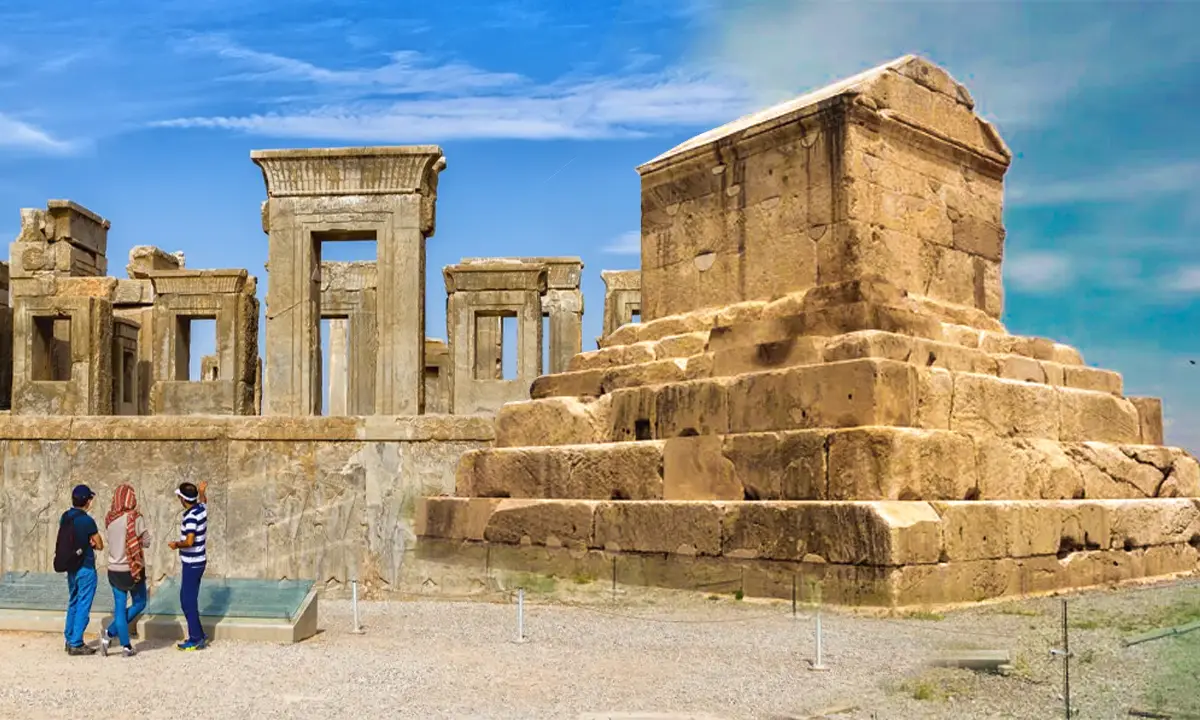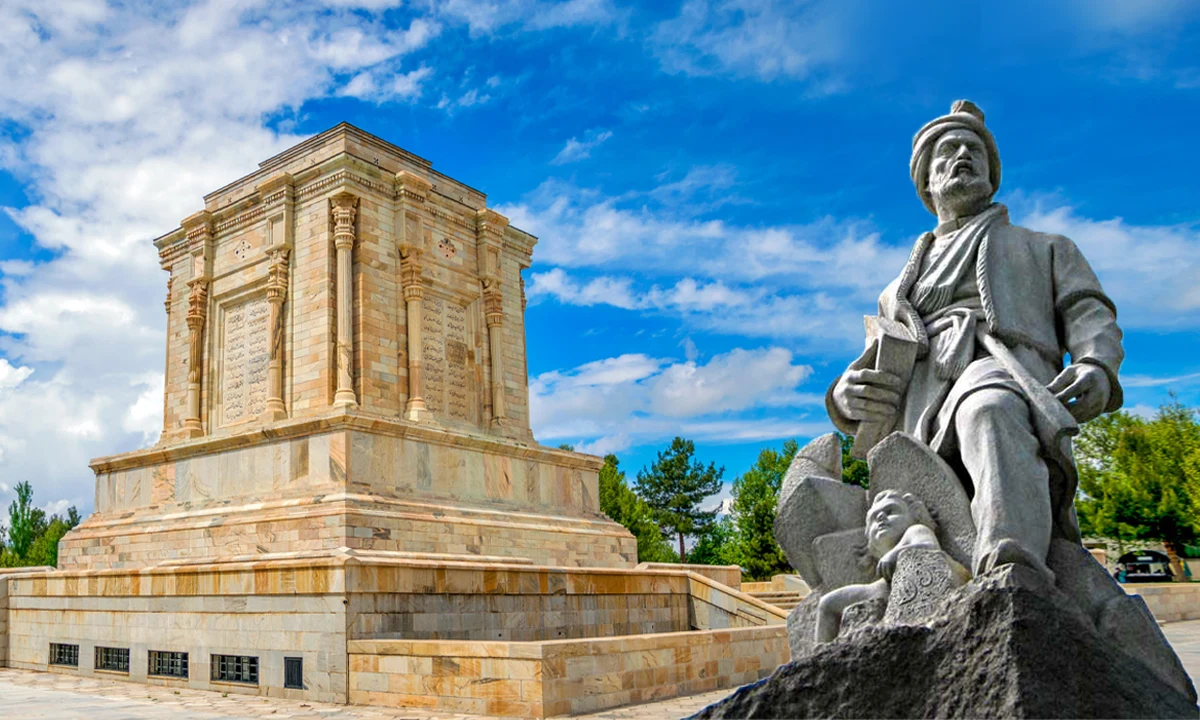Persian Miniature | Introduction to Iranian Miniatures
![]() Author : Alirezaa | Date : Monday 28 July 2025 16:41
Author : Alirezaa | Date : Monday 28 July 2025 16:41

Delve into the captivating world of Iranian Miniatures with our article. Discover the essence of this ancient Persian art form, its rich history, and enduring cultural significance. Ideal for art lovers and cultural enthusiasts eager to explore a realm of intricate beauty and profound storytelling.
Table of Contents
- Definition and Overview of Iranian Miniature Painting
- Top Cities for Persian Miniature in Iran
- Characteristics of Iranian Miniature Painting
- Historical Context and Development of Iranian Miniatures
- Influence of Other Cultures and Regions
- Famous Miniature Artists and Their Works
- Techniques and Materials in Iranian Miniature Painting
- Contemporary Iranian Miniatures
- Prominent Contemporary Miniature Artists and Their Contributions
- Cultural Significance and Legacy of Iranian Miniature Painting
Definition and Overview of Iranian Miniature Painting
Iranian miniature painting, a traditional style of Persian art, is known for its intricate detail, vibrant colors, and poetic storytelling. These paintings are often small in scale, yet they exhibit a remarkable level of precision and complexity. The art form was primarily developed for illustrating manuscripts and books but later evolved to include standalone pieces. Iranian miniatures are characterized by their unique use of perspective, where figures and objects are depicted in a stylized manner rather than adhering to realistic proportions or spatial depth. The themes often revolve around mythology, poetry, literature, and royal court life, with a distinctive blend of naturalism and surrealism.
Historical Origins and Evolution Through Persian History
The origins of Iranian miniature painting can be traced back to the 13th century, influenced by the Mongol invasions, which introduced Chinese artistic techniques and motifs into Persian art. During the 15th century, particularly in the Timurid and Safavid eras, the art form flourished significantly. This period saw the establishment of royal workshops, or "kitabkhana," where artists created intricate manuscripts under the patronage of the court. Each historical period, from the Safavid to the Qajar dynasties, brought its own stylistic changes, reflecting the political, social, and cultural shifts of the time. The art form evolved, incorporating elements from Islamic calligraphy, European painting, and indigenous Persian artistic traditions.
Influence of Religion, Culture, and Politics on the Art Form
Religion, culture, and politics have played pivotal roles in shaping Iranian miniatures. Islamic beliefs, while prohibiting the depiction of religious figures in art, greatly influenced the use of intricate geometric patterns and calligraphy. The portrayal of non-religious subjects in miniatures offered a medium for artistic expression within these religious constraints.
Culturally, the themes of Persian poetry and literature, such as those from epic works like Ferdowsi’s "Shahnameh" or the romantic poems of Hafez and Rumi, have been a significant source of inspiration for miniature artists. These literary works often provided the narratives and characters depicted in the paintings.
Politically, the changing dynasties and rulers of Iran had a substantial impact on the art of miniature painting. Royal patronage was a major driving force behind the development of the art form. Different rulers and political climates influenced both the thematic focus of the paintings and the style, with artists often incorporating contemporary events and royal figures into their work.
Top Cities for Persian Miniature in Iran
When exploring Persian miniature art, certain cities in Iran stand out for their rich contributions and historical significance. These cities are known for nurturing the art form, housing significant collections, and being home to master artists throughout history.
Isfahan: Often referred to as the cultural capital, Isfahan boasts a history of art and architecture with Persian miniatures being a significant part of its legacy. The city's artisans are renowned for their intricate designs and storytelling through art.
Tabriz: A historical center for Persian literature and art, Tabriz played a pivotal role in the development of miniature painting, especially during the Ilkhanid period. Its artists are known for their innovative styles and detailed narrative scenes.
Shiraz: Famous for its poetic heritage, Shiraz has also been an important center for Persian miniature art, particularly during the Zand dynasty. The city's miniatures often feature lush landscapes and romantic themes.
✔️Read More : Shiraz souvenirs and handicrafts; What to buy in Shiraz?
Tehran: As the capital city, Tehran is home to several museums that house important collections of Persian miniatures, including the National Museum of Iran and the Reza Abbasi Museum, offering insights into the evolution of this art form.
Mashhad: Known for its religious significance, Mashhad has also contributed to the preservation and continuation of Persian miniature painting, with miniatures often reflecting religious and spiritual themes.
Each of these cities offers a unique perspective on the art of Persian miniatures, reflecting the diverse historical, cultural, and artistic landscapes of Iran.
Characteristics of Iranian Miniature Painting
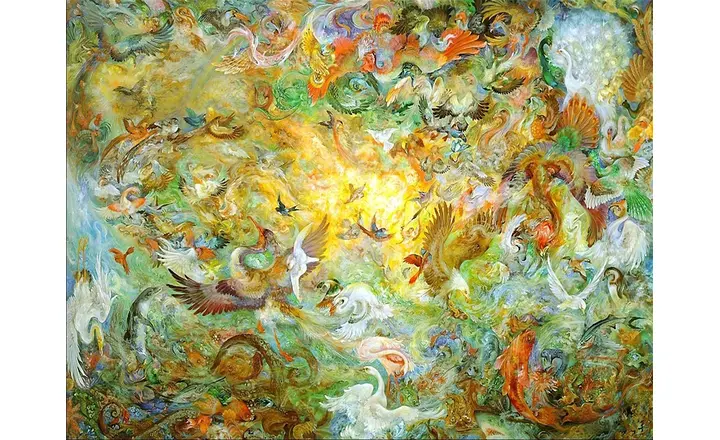
Style, Colors, Themes, and Techniques
Iranian miniature paintings are distinguished by their detailed and vivid style, often characterized by a rich palette and intricate compositions. The colors used are typically bright and pure, with gold and lapis lazuli blue being particularly prominent. These hues are not just chosen for their visual appeal but also for their symbolic meanings.
The technique in Iranian miniatures involves careful layering of colors and precise, delicate brushwork. Artists traditionally ground their own pigments and used brushes made from animal hair to achieve the fine lines necessary for detailing. The paintings are usually small in scale, but they pack an immense amount of detail, with each element meticulously rendered.
Common themes in Iranian miniatures include scenes from Persian epics and poetry, depictions of royal courts and battles, and illustrations of classical Persian tales. The art form is renowned for not following the strict rules of perspective seen in Western art. Instead, it utilizes a flattened, two-dimensional space where figures often appear in profile, and size indicates the importance of the character rather than their spatial position.
Symbolism and Storytelling
Symbolism plays a crucial role in Iranian miniatures. Colors, shapes, and even the orientation of elements within the painting can carry significant meanings. For example, the color green often represents paradise or the spiritual world, while birds can symbolize the soul's ascent. The intertwining of human figures, animals, and natural elements frequently conveys deeper moral or spiritual messages, often derived from Sufi mysticism or classical Persian poetry.
Storytelling is at the heart of many Iranian miniatures. These paintings are not mere decorative pieces; they narrate stories, capture moments from epics, or convey moral and philosophical ideas. The narrative aspect is so central that viewers familiar with Persian literature can often identify the specific story or poem being depicted.
Common Motifs
Iranian miniatures are abundant in recurring motifs that hold cultural and artistic significance:
- Landscapes: These are not just backdrops but are imbued with symbolic meaning. Mountains, gardens, and rivers in miniatures often represent an idealized, heavenly version of nature.
- Court Scenes: These are common and typically depict the opulence and power of the ruling class. Scenes of royal feasts, audiences, or kings in their courts are frequent.
- Mythical Creatures: Creatures like the Simurgh, a mythical bird, or dragons often appear in miniatures, drawing from the rich tapestry of Persian mythology.
- Floral and Geometric Patterns: These are often used to fill spaces around the main figures or scenes. They are not merely decorative; their arrangement and form often hold symbolic meaning.
- Scenes from Literature: Depictions of scenes from famous works like the "Shahnameh" or the romantic tales of "Layla and Majnun" are prevalent.
Historical Context and Development of Iranian Miniatures
Overview of Significant Historical Periods.
Seljuk Period (1037–1194)
The Seljuk era marked the beginning of Islamic influence in Persian art. While Iranian miniatures were not fully developed during this period, the foundations were laid with the introduction of Islamic motifs and calligraphy.
Artisans began to integrate Arabic script into their work, blending Islamic art forms with Persian artistic traditions.
Timurid Period (1370–1507)
A significant era for the development of Iranian miniatures, the Timurid period saw the emergence of the classic Persian miniature style.
It was during this time that the art of bookmaking and manuscript illustration flourished. Persian miniatures became more sophisticated, with greater emphasis on detailed figures and complex compositions.
The city of Herat, in present-day Afghanistan, became a notable center for the arts.
Safavid Period (1501–1736)
This period is often considered the golden age of Persian miniature painting. The Safavid dynasty heavily patronized the arts, leading to remarkable developments in miniature painting.
Royal workshops attracted the best artists of the time, resulting in a refinement of styles and techniques.
This era also saw the integration of European techniques, especially after diplomatic contacts increased with the West.
Qajar Period (1789–1925)
The Qajar era marked a decline in traditional miniature painting as Western influences became more dominant.
Art during this period began to reflect more modern and secular themes, moving away from the classical and religious motifs of earlier periods.
Despite this, some artists continued to produce miniatures, often blending traditional styles with newer, European-influenced approaches.
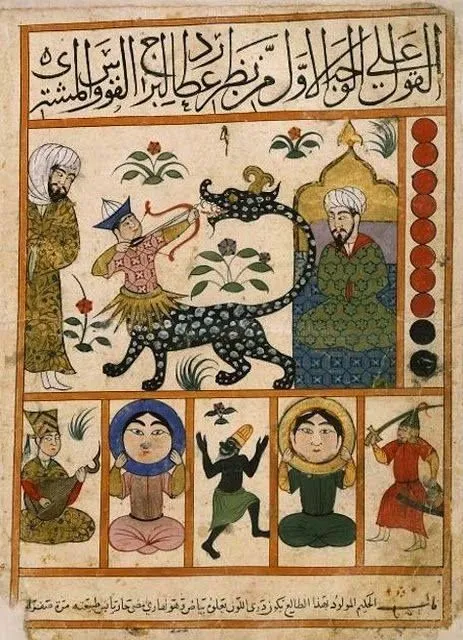


Influence of Other Cultures and Regions
The Mongolian conquests introduced Chinese artistic techniques and motifs, such as the use of landscape to frame scenes and the depiction of cloud bands in the skies.
Turkish elements, especially from the Ottoman Empire, also influenced Iranian miniatures, evident in the use of certain color schemes and patterns.
These external influences melded with indigenous Persian artistic traditions, creating a unique fusion that characterized Iranian miniatures.
Transition from Manuscripts to Standalone Art Pieces
Initially, miniature paintings were primarily used to illustrate manuscripts and were an integral part of bookmaking. These illustrations served to enhance the narrative of the text, whether it was poetry, epic tales, or religious works.
Over time, as the art form evolved, artists began creating miniatures as standalone pieces, independent of textual narratives. This transition allowed for greater artistic freedom and innovation.
By the 18th and 19th centuries, Iranian miniatures began to be appreciated as individual art pieces, paving the way for contemporary interpretations of the form.
Famous Miniature Artists and Their Works
Reza Abbasi (1565–1635)
- Profile: Reza Abbasi was a leading Persian miniaturist of the Safavid era, particularly under the reign of Shah Abbas I. He became the head of the royal Kitabkhana (book production workshop) and played a significant role in developing the Safavid art style.
- Famous Works: "Rostam Killing the White Demon," "Two Lovers." His works are characterized by their elegant figures, expressive faces, and the use of softer colors.
- Impact and Legacy: Abbasi revolutionized Persian miniature art by introducing a more naturalistic approach, especially in the portrayal of the human figure. His influence extended beyond painting to calligraphy and other art forms, shaping Safavid art and its subsequent evolutions.

Kamāl ud-Dīn Behzād (c. 1450–1535)
- Profile: Behzad is often considered the most prominent figure in Persian miniature painting. He worked under the Timurid and early Safavid dynasties, contributing significantly to the Herat School of Painting.
- Famous Works: "The Seduction of Yusuf," "The Construction of the Castle of Khawarnaq." His miniatures are renowned for their dynamic composition and narrative depth.
- Impact and Legacy: Behzad's contribution lies in his mastery of spatial composition and his ability to convey complex narratives through intricate detail. He influenced many future artists and elevated Persian miniature painting to a new level of artistic excellence.
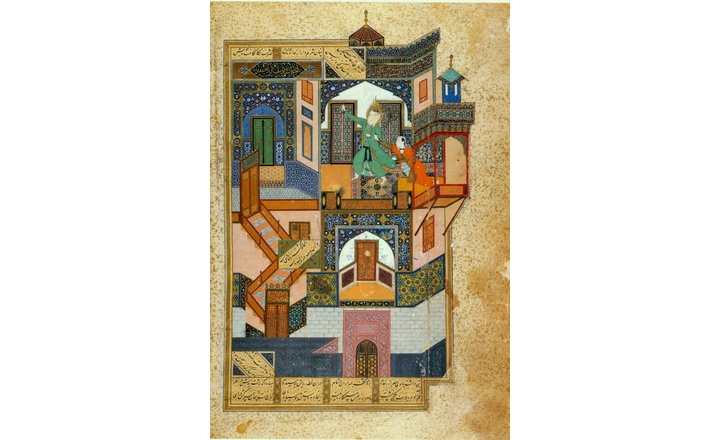
Mir Sayyid Ali (1510–1572)
- Profile: A prominent artist of the Safavid period, Mir Sayyid Ali was also active in the Herat School before moving to Tabriz. He worked under the patronage of Shah Tahmasp I and is known for his refined and delicate style.
- Famous Works: Illustrations for the Shahnameh, such as "Faridun Crosses the River Dijla." His works are distinguished by their elegant figures and expressive landscapes.
- Impact and Legacy: Mir Sayyid Ali played a crucial role in the development of the Safavid style of miniature painting. His work is notable for its lyrical quality and refined aesthetic, which influenced subsequent generations of Persian artists.

Contribution of These Artists to Iranian Miniature Painting
- Innovation in Style: Each artist brought unique innovations to the art form, whether in technique, color use, or narrative storytelling.
- Legacy: These artists set standards for future generations, influencing not only the aesthetics of Persian miniatures but also the cultural and artistic values conveyed through them.
- Cultural Impact: Their works reflect and document the cultural, religious, and social contexts of their times, providing insights into the history of Iran and the broader Islamic world.
✔️Read More : About Monabbat Kari | Iranian Wood Carving Art
Techniques and Materials in Iranian Miniature Painting

Traditional Techniques
Preparation of the Surface:
Iranian miniatures were typically painted on paper, which was first coated with a fine layer of starch and burnished to create a smooth surface. This process provided a suitable base for detailed painting.
Drawing and Composition:
The process usually began with a detailed pencil or charcoal sketch. Composition in Iranian miniatures is complex, often involving multiple figures, intricate landscapes, and elaborate patterns.
Application of Color:
Colors were applied in layers, starting with lighter shades and gradually adding darker tones and details. This layering technique allowed for depth and intensity in the artwork.
Traditional Persian miniatures have a distinct visual style with flattened spatial perspectives and figures often depicted in profile.
Detailing and Finishing:
Fine brushes were used for detailing, especially for facial expressions, clothing patterns, and natural elements.
Gold leaf was often used for embellishment, particularly in manuscripts, to highlight certain elements and add a luxurious feel.
Materials Used
Paper:
High-quality, handmade paper was the primary material. The paper's quality was crucial as it needed to hold the fine brushwork and layers of pigment without warping.
Pigments:
Pigments were derived from various natural sources like minerals, plants, and insects. For example, lapis lazuli for blue and cochineal for red.
These pigments were ground into a fine powder and mixed with a binding agent, like egg white or gum Arabic.
Brushes:
Brushes were typically made from the fur of animals like squirrels or goats. The fine tips of these brushes allowed for the precision required in miniature painting.
Comparison with Other Miniature Traditions
Indian Miniatures:
Similar to Persian miniatures, Indian miniatures also focus on intricate details and the use of bold colors. However, Indian miniatures often have a richer color palette and more emphasis on lush landscapes and architectural elements.
Indian miniatures frequently depict Hindu gods, goddesses, and epics, reflecting the region's religious and cultural narratives.

Ottoman Miniatures:
Ottoman miniatures share similarities with Persian miniatures in the use of color and composition. However, Ottoman art often includes more Islamic and Byzantine architectural elements.
The facial features in Ottoman miniatures are typically more stylized compared to the somewhat naturalistic approach seen in Persian miniatures.

The techniques and materials used in Iranian miniature painting are a testament to the art form's sophistication and the artists' meticulous attention to detail. While there are similarities with other miniature traditions like the Indian and Ottoman, Iranian miniatures stand out for their unique use of color, composition, and symbolism, reflecting the rich cultural and historical tapestry of Iran.
Contemporary Iranian Miniatures

Evolution in the Modern Era
Iranian miniature painting has undergone significant transformations in the contemporary era, adapting to changes in society, technology, and artistic sensibilities. While maintaining its roots in traditional motifs and techniques, modern miniaturists have infused this ancient art form with new life, often addressing contemporary themes and experimenting with innovative styles.
Blending Tradition with Modernity:
Contemporary artists often maintain the use of traditional techniques and materials but incorporate modern subjects and themes. This fusion creates a dialogue between the past and present, making the art form relevant to newer audiences.
Exploration of New Themes:
Modern miniatures sometimes deviate from the classical themes of epic tales and royal courts to address current social, political, and cultural issues. This includes topics like gender roles, globalization, and identity.
Incorporation of Digital Techniques:
Some artists have begun integrating digital tools and techniques into their work. This includes using digital software for design and layout before executing the final work by hand, thus expanding the boundaries of traditional miniature painting.
Influence of Contemporary Themes and Techniques
- The incorporation of contemporary themes has brought a new dimension to Iranian miniatures, making them a medium for social commentary and personal expression.
- Techniques have also evolved, with artists using mixed media, such as incorporating calligraphy, collage, or photography, to create more textured and layered artworks.
- This evolution reflects the resilience and adaptability of Iranian miniature painting, showing its capacity to evolve while respecting its historical roots.
Prominent Contemporary Miniature Artists and Their Contributions
Farah Ossouli:
Ossouli is known for her innovative approach to traditional Persian miniature painting. She blends classical techniques with modern themes, often focusing on women's roles and experiences in society.
Her work is characterized by a fusion of traditional motifs with contemporary composition, making her a pivotal figure in the modern Iranian art scene.
Fatemeh Emdadi:
Emdadi is another prominent artist who has contributed significantly to the contemporary miniature painting scene. Her work often explores themes of cultural identity and the complexities of modern life in Iran.
She is known for her detailed and vibrant compositions that maintain the essence of traditional miniatures while imbuing them with a modern sensibility.
Aydin Aghdashloo:
Though not exclusively a miniaturist, Aghdashloo has made significant contributions to the field. His work often reflects on Iran's history and culture, blending traditional Persian art forms with Western techniques.
His approach to miniature painting is emblematic of the broader trends in contemporary Iranian art, where the past and present coalesce to create a unique artistic language.
Contemporary Iranian miniatures represent a dynamic and evolving art form. By embracing modern themes and techniques while preserving traditional practices, these artists ensure that Iranian miniature painting remains a vibrant and relevant part of the global art landscape. Their works not only pay homage to the rich heritage of Persian art but also push its boundaries, inviting new interpretations and understandings.
Cultural Significance and Legacy of Iranian Miniature Painting
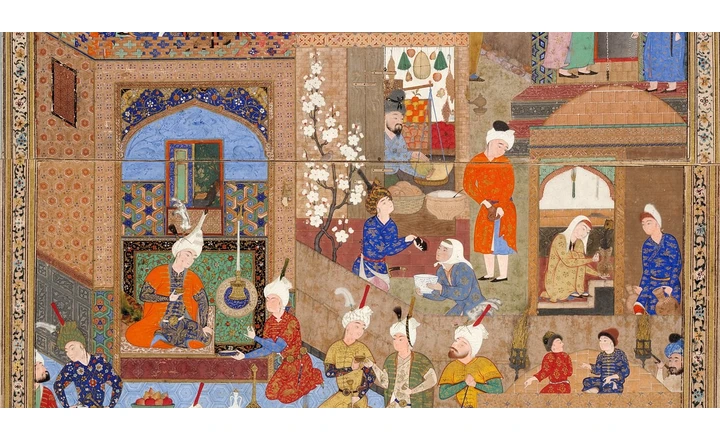
Role in Iranian Culture and Significance in Art History
- Cultural Reflection and Identity:
Iranian miniature painting is more than an art form; it's a cultural emblem that encapsulates the essence of Persian identity and history. These paintings are a visual narrative of Iran’s rich cultural heritage, depicting its myths, legends, and historical events.
- Artistic Influence and Evolution:
In art history, Iranian miniatures stand out for their unique style, intricate detailing, and use of color. They represent a significant chapter in the history of Islamic art, showcasing the artistic excellence achieved in the Muslim world during various periods.
- Preservation of Literary and Historical Narratives:
Miniatures often served as illustrations for literary and poetic works, playing a crucial role in preserving these texts and making them more accessible and engaging. They provided visual context to the stories and poems that are central to Persian literature.
Influence on Other Art Forms and Cultural Products
- Influence on Regional Art Forms:
The aesthetic principles and techniques of Iranian miniatures have influenced neighboring regions, including Central Asia and the Ottoman Empire, leading to the development of distinct yet related artistic traditions.
- Impact on Contemporary Art and Design:
Elements of miniature painting, such as its color schemes, composition styles, and motifs, have found their way into various contemporary art and design fields, including fashion, graphic design, and digital art.
- Inspiration for Modern Artists:
Many modern artists, both in Iran and globally, draw inspiration from the themes and stylistic elements of Persian miniatures, creating works that bridge traditional and contemporary art forms.
Preservation and Revival in Modern Times
- Cultural Preservation Efforts:
Museums and cultural institutions in Iran and around the world actively collect and exhibit Iranian miniatures, helping to preserve and promote this art form.
Academic studies and research on Persian miniatures contribute to a deeper understanding and appreciation of this art form.
- Revival and Adaptation:
Workshops, courses, and exhibitions dedicated to Iranian miniature painting have played a crucial role in its revival. These platforms not only teach traditional techniques but also encourage experimentation and adaptation in contemporary contexts.
- Integration in Education and Public Awareness:
Efforts are being made to integrate the appreciation and practice of miniature painting into educational curricula in Iran, aiming to instill an appreciation for this art form in younger generations.
- Digital Preservation and Accessibility:
Digitization projects and online galleries have made Iranian miniatures more accessible to a global audience, ensuring that the beauty and intricacy of this art form reach beyond geographical and cultural boundaries.
The cultural significance and legacy of Iranian miniature painting are profound and enduring. As a repository of history, a beacon of artistic excellence, and a source of inspiration, Iranian miniatures continue to be a vital part of both Iranian culture and the broader tapestry of world art. Through preservation and adaptation, this ancient art form continues to evolve and resonate with contemporary audiences.
Last Word
Iranian miniature painting, a venerable art form steeped in history, continues to captivate audiences with its intricate details and vibrant storytelling. These miniatures, more than just aesthetic creations, are a tapestry of Iran's rich cultural and historical narratives, interweaving traditional and modern themes. In the globalized era, they stand as a testament to the enduring power of cultural expression, bridging past and present, local and global. The art form's ability to adapt while retaining its unique identity promises a dynamic future, ensuring its relevance and appeal continue to thrive. The enduring beauty and complexity of Iranian miniatures not only celebrate Iran's artistic legacy but also contribute significantly to the world's cultural heritage, demonstrating the timeless and universal language of art.
FAQs about Your Common Questions About Persian Miniature Art
In the following section, we answer some of the most frequently asked questions about Persian miniature painting and its rich history:
What is Persian miniature art?
Persian miniature is a traditional form of painting that features intricate, detailed, and colorful illustrations, often depicting scenes from literature, mythology, and daily life in Iran’s history.
When did Persian miniature painting originate?
This art form dates back to the 13th century and flourished during the Timurid and Safavid dynasties, becoming a symbol of Persian cultural heritage.
What materials and techniques are used in Persian miniatures?
Artists traditionally use fine brushes, natural pigments, and gold leaf on paper or parchment. The work requires great precision and attention to detail.
Where can I see authentic Persian miniatures?
Authentic miniatures are displayed in museums such as the National Museum of Iran in Tehran, as well as in private collections and galleries specializing in Persian art worldwide.
Is Persian miniature art still practiced today?
Yes, many contemporary Iranian artists continue to preserve and innovate within this tradition, combining classical techniques with modern themes.
Can tourists buy Persian miniature artworks in Iran?
Absolutely. Many art shops, galleries, and cultural centers in Iran, especially in cities like Tehran, Isfahan, and Shiraz, offer authentic miniature paintings and prints for sale.




